QNAP TS879-Pro 8-Bay NAS Review
Chris Hadley / 12 years ago
Noting a couple of design tweaks over the 869Pro, the 879Pro does look a little more refined in its appearance, and the major part we note is the movement of the drive bays from the right to the left hand side of the enclosure. Other major changes include a more grey colour over black and running down the right is a simple brushed metal trim which finishes the front end off nicely.
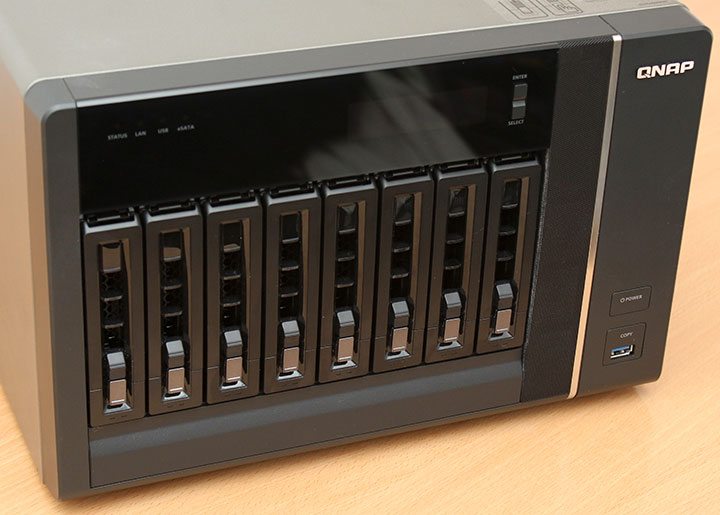
Virtually every four bay NAS and above that I’ve looked at has a screen to give system information relating to drive status, system name, IP address, link aggregation (if used) and so on – this is no different.

Status lights are a must, but not being noted until I took this particular image, there is also a status light for 10 Gigabit connections as well, but as this is an optional extra I can understand why it is not labelled underneath, unlike the other four LEDs.

To the left hand side of the metal trim is a grill for air flow over the motherboard and we did note how effective the fans in this system are as after a couple of days of solid running, there was a slight layer of dust present (This is partly because our office is beside a building site so dust is a bit more profound at the moment). To the right of the trim we do also have a USB3.0 port surrounded by a relating copy button and also the systems main power button.
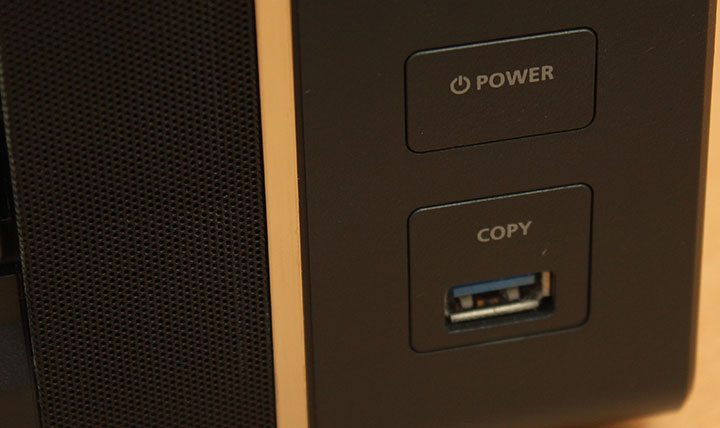
Looking a little closer at the drive bays, the use of trays that don’t require a key to lock gives a better overall appearance, with a simple slide lock mechanism used instead to prevent accidental removal from the system whilst in use.
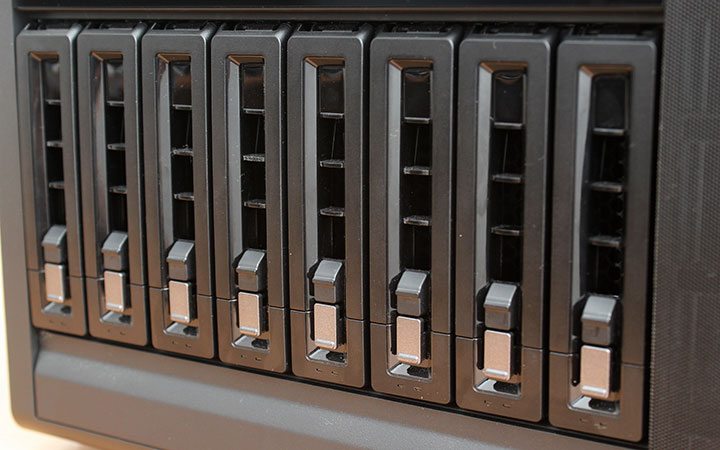
Taking the trays out, I do note how snug the drives sit within the frame. Within some trays the drive has a little bit of movement side to side before its screwed down, but with these trays, the drive fits and has no give in it at all as it sits on the rubberised side walls. Also I note that the drives are screwed from the side rather than the base to further reinforce them. This does appear to be part of a resonant noise suppression method, after all, eight drives working away are not necessarily going to be quiet.
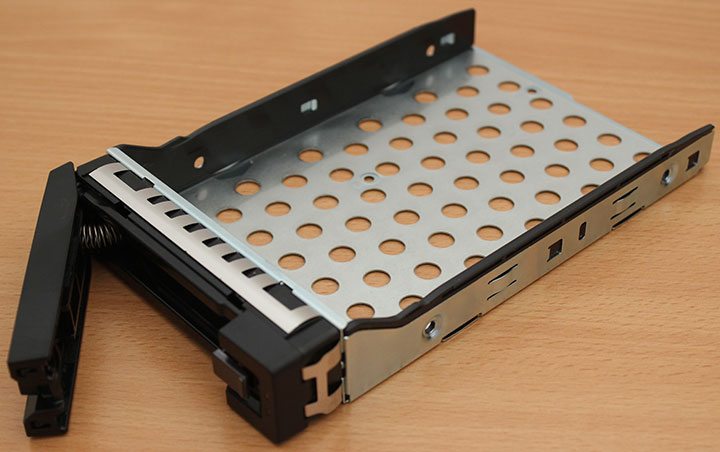
Spinning the unit around we can see the two large fans that draw air through the system to keep it cool. Whilst I mentioned that a light dust build up after a short time indicated a high air flow; which is a good thing; the fans are not loud by any standards and are only noticeable for a brief period as the system boots up and they self-test. Above the fans is the system power supply, which in this case is fully mounted with no hot-swap or redundant features.

To the left of the fan housing is an area of more interest. Nestled into this small space we find, four USB 2.0 and one 3.0 port(s), two eSATA ports, VGA (reserved) and HDMI, two Gigabit LAN ports, a Kensington lock point and at the top a half-height PCIe expansion slot for 10G Ethernet or fibre.
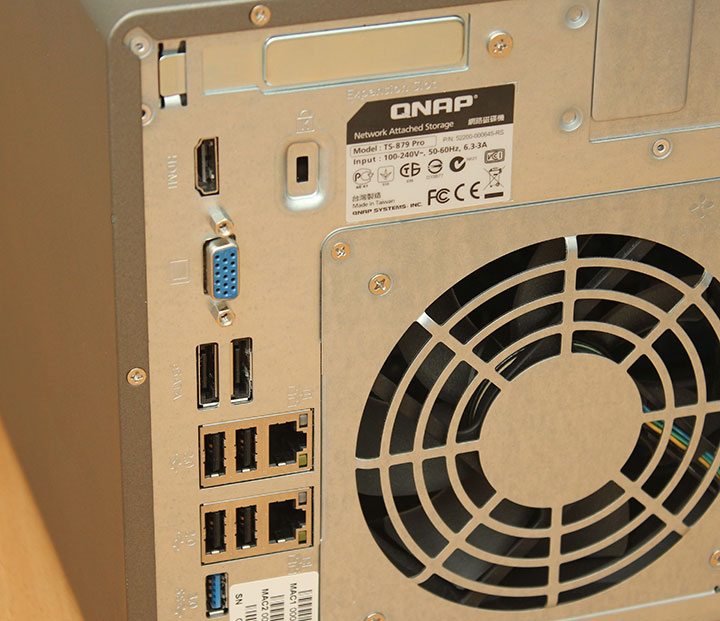
Pulling the cover off the system we can get a slight sneak peak inside to what is essentially a compact system. The Core-i3 CPU has a passive heat sink, which would back up why the fans have such a high air flow. Just behind that CPU cooler we can find the secured 2GB of DDR3 RAM and at the front of the board a PCIe x8 slot for expansion.




















